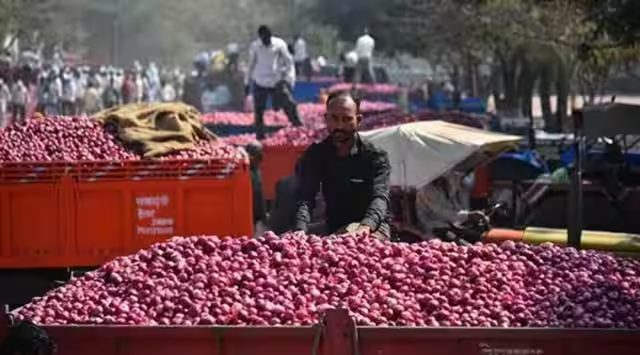The prices of Onion have recently soared due to a varied number of factors. After tomato and spices prices rose. The next key commodity price which rose was onion. This has been attributed to lower shelf price and poor sowing in the Kharif season . Unseasonal rain had affected the quality of onions . Further they were harvested earlier ,so a record downfall of onion prices was witnessed in February month .
This affected farmer sentiment and led to lower sowing . Wholesale prices were ranging from Rs 5 per kg to Rs 24 kg in Nashik during the second week of August, Retail prices were Rs 25-35 per kg. It was estimated that the price of onion would reach a high of Rs 60 – Rs 70 at the end of August .
The political crop
Onion has always been an important staple for the Indian population . Inflation has been affecting the common man and the last thing the current government would want is the rise of onion prices. The government is planning several measures like petrol tax cuts to reduce prices. Onion prices have always played an important role during the election .
To prove how important the commodity is ,we will use the following example . In 2019 ,India’s Finance Minister Nirmala Sitharaman said price didn’t affect her as she didn’t’ use the vegetable prominently . This statement was subjected to heavy criticism .
40 percent duty on exports
The government on 19th August ,introduced an export duty of 40 percent on onions. This was done to check prices and improve supplies .This is valid till December 31,2023. This was imposed with immediate effect . As there has been a sharp jump in exports ,the government aims to bring it down to ensure proper supply in India. The government also has decided to release onion stocks to combat this .
Farmer protest
The farmer protests revolving around the hike in export duties on onions highlight a significant concern within the agricultural sector. The decision to raise export duties can have far-reaching consequences for farmers .Farmers, who heavily rely on onion cultivation, fear that increased export duties could lead to reduced demand and subsequently lower prices in the domestic market.
This could adversely affect their livelihoods, already vulnerable due to factors like weather fluctuations and market unpredictability. The protests underscore farmers’ demands for fair pricing mechanisms and protection of their interests.
They blame the government for looking more towards the consumer interest . They feel their interests have been ignored like when the price of Quintal were very low. The largest wholesale market of onions in Asia is the city of Nashik .Nashik is a city in Maharashtra . At a meeting held in Nashik ,the trades and commission agents of Nashik had decided to boycott onion trade on Monday.
They believe that lower prices and export duties would affect their profits. The state agriculture minister of Maharashtra ,Dhananjay Munde has said that he will meet with the union minister . The farmers have urged the government to rethink their decision .

( Image source : The Indian Express )
In conclusion, the fervent protests led by farmers against the imposition of heightened export duties on onions underline the intricate interplay between economic policy and agricultural livelihoods. These demonstrations serve as a poignant reminder that the decisions made within the corridors of power have tangible and profound impacts on the lives of those working the land .As governments grapple with the task of reducing inflation , it is imperative that they engage in constructive dialogues with all stakeholders involved.












